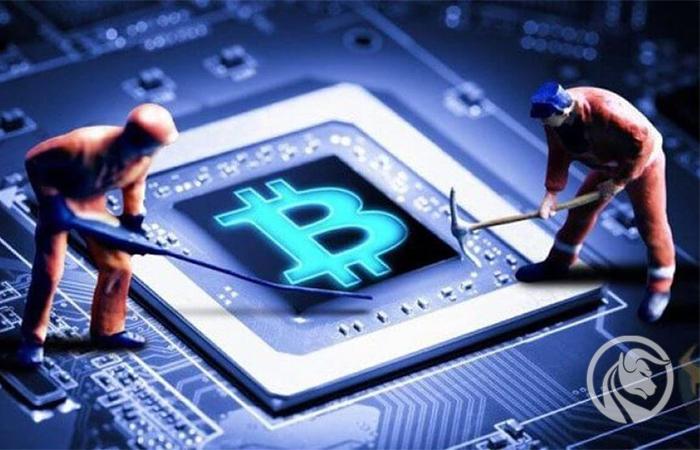Cryptocurrency mining - what is it about?
Cryptocurrency mining - sounds enigmatic, right? However, almost everyone has heard stories about miners mining cryptocurrencies and making fortunes. Home computer still in 2010 could dig up 50 bitcoins per day, which at today's rate gives about PLN 11 million. How is it now? Can anyone mine cryptocurrencies, how to do it and does it really pay off without huge investments in specialized equipment? We check.
Cryptocurrency mining, or cryptocurrency mining, is the digital equivalent of a miner's job. Although it is not muscle work, you do not risk your health and life underground, and everything is done by the computer, but the computer also has to find a block to earn money on it. Cryptocurrencies - as the name suggests - are based on cryptographic solutionswhich make the code unbreakable and digital coins "forged". In addition, each of the coins is connected to the previous one in a way. The computer has to solve a complicated mathematical problem to "dig up" the next block, that is the next coin. Only after digging it, it appears on the web and can be traded, paid etc ..
How to become a cryptocurrency miner?
You don't need to be an outstanding IT specialist, coder, know cryptography or blockchain technology. Appropriate computer equipment will be our pick and experience.
The rules are simple:
The more computing power, the better.
The amount of earnings will also be affected by the current valuation of a given cryptocurrency (because you can not only mine Bitcoin), as well as the remuneration for each block (because it also changes). Current electricity prices are also important.
The first Bitcoin block was excavated on January 3, 2009 by Satoshi Nakamoto, the legendary and anonymous creator of Bitcoin. Back then, it was possible to do it on an ordinary home computer, without much effort accumulating e.g. 1 million BTC.
The more people there were on the network, the more its distraction and security grew, but also the load. The beginnings, however, were such that in 2010 a home computer could mine 50 BTC a day (at today's rate, it is about PLN 11 million). Then however, 1 BTC cost $ 0,1so the operation was unprofitable if it was not treated as an investment for the future.
Cryptocurrency miners and their types
So, special cryptocurrency miners began to be built. Four types of excavators were created: CPU, GPU, FPGA and ASIC. The CPU is an ordinary computer, while the GPU uses graphics cards for its calculations, which simply run faster. This resulted in a significant increase in the prices of graphics cards, which so far were sought mainly by computer players. Although an excavator with a graphics card is twice as expensive as a regular one, however, it copies cryptocurrencies up to six times faster. FPGA, in turn, is twice as fast as the GPU, thanks to the conversion of the programmable logic circuit. In 2013, computers with ASICs were constructed, i.e. in fact equipment that was supposed to perform only one task: the calculations needed to mine cryptocurrencies.
And this is changing, because mining in the cloud is becoming more and more popular. You can even pay for the rental of equipment remotely, and after deducting electricity costs and rental fees, we get money for the coins you mined. Or we do not receive because we take the exchange rate risk.
Cryptocurrency mining and profitability
And here we come to send the matter: is mining cryptocurrencies profitable? The cost of electricity and the valuation of cryptocurrencies are not the only variables that affect the profitability of mining.
As the mining equipment's performance increases, the reward for adding another block to the blockchain decreases in some cryptocurrencies. This halving. This is the case with the still most popular Bitcoin, where initially you got 50 BTC for each side. Every 210 thousand However, the reward blocks are reduced by half. As of May 2020, it is 6,25 BTC, and it is estimated that the next halving will take place in 2024. Interestingly, around every halving BTC price definitely grows.
Nowadays, you need to have really solid equipment to earn money from digging. Business F2Pool estimates that the computing power at the level of 1TH / s allows for daily earnings of ... PLN 0,82. And it's gross, without the cost of electricity and equipment purchase. Nowadays excavators for tens of thousands of dollars pay back in about a yearif failure can be avoided. The cheaper the equipment, the harder it is to even get to zero.
The calculations apply to BTC, so more and more miners are switching to other, less popular cryptocurrencies, where the competition is greater and the price can rise much faster. Competition (or the lack of it) is very important, because only the one who calculates it first gets the prize for digging a block. That is why miners more and more often create joint mines, i.e. mining pools. They combine the computing power of their miners to be competitive for giants, investing millions in entire farms, mining cryptocurrencies. The most popular of them are F2Pool, Huobi.pool, AntPool, Poolin or ViaBTC. So if we want to start and not invest huge amounts right away, it is worth getting interested in one of them at the beginning.






















![Forex Club – Tax 9 – Settle tax on a foreign broker [Download the Application] Forex Club - Tax 9](https://forexclub.pl/wp-content/uploads/2024/02/Forex-Club-Podatek-9-184x120.jpg?v=1709046278)
![Trading View platform – solutions tailored to the needs of traders [Review] trading view review](https://forexclub.pl/wp-content/uploads/2024/03/trading-view-recenzja-184x120.jpg?v=1709558918)
![How to connect your FP Markets account to the Trading View platform [Guide] fp markets trading view](https://forexclub.pl/wp-content/uploads/2024/02/fp-markets-trading-view-184x120.jpg?v=1708677291)
![How to invest in ChatGPT and AI? Stocks and ETFs [Guide] how to invest in chatgpt and artificial intelligence](https://forexclub.pl/wp-content/uploads/2023/02/jak-inwestowac-w-chatgpt-i-sztuczna-inteligencje-184x120.jpg?v=1676364263)




![Izabela Górecka – “Success on the market depends not only on knowledge, but also on emotional stability” [Interview] Izabela Górecka - interview](https://forexclub.pl/wp-content/uploads/2024/04/Izabela-Gorecka-wywiad-184x120.jpg?v=1713870578)
![WeWork – the anatomy of the collapse of a company valued at $47 billion [WeWork, part II] wework bankruptcy story](https://forexclub.pl/wp-content/uploads/2024/04/wework-bankructwo-historia-184x120.jpg?v=1711729561)
![Adam Neumann – the man who screwed up Softbank [WeWork, part AND] adam neumann wework](https://forexclub.pl/wp-content/uploads/2024/04/adam-neumann-wework-184x120.jpg?v=1711728724)




![The most common mistakes of a beginner trader - Mr Yogi [VIDEO] Scalping - The most common mistakes of a beginner trader - VIDEO](https://forexclub.pl/wp-content/uploads/2024/03/Scalping-Najczestsze-bledy-poczatkujacego-tradera-VIDEO-184x120.jpg?v=1711601376)
![Learning patience: No position is also a position - Mr Yogi [VIDEO] Scalping - Learning patience - No position is also a position - VIDEO](https://forexclub.pl/wp-content/uploads/2024/03/Scalping-Nauka-cierpliwosci-Brak-pozycji-to-tez-pozycja-VIDEO-184x120.jpg?v=1710999249)
![When to exit a position and how to minimize losses - Mr Yogi [VIDEO] Scalping - When to exit a position and how to minimize losses - VIDEO](https://forexclub.pl/wp-content/uploads/2024/03/Scalping-Kiedy-wyjsc-z-pozycji-i-jak-minimalizowac-straty-VIDEO-184x120.jpg?v=1710336731)




![Forex Club – Tax 9 – Settle tax on a foreign broker [Download the Application] Forex Club - Tax 9](https://forexclub.pl/wp-content/uploads/2024/02/Forex-Club-Podatek-9-300x200.jpg?v=1709046278)
![How to invest in ChatGPT and AI? Stocks and ETFs [Guide] how to invest in chatgpt and artificial intelligence](https://forexclub.pl/wp-content/uploads/2023/02/jak-inwestowac-w-chatgpt-i-sztuczna-inteligencje-300x200.jpg?v=1676364263)












Leave a Response